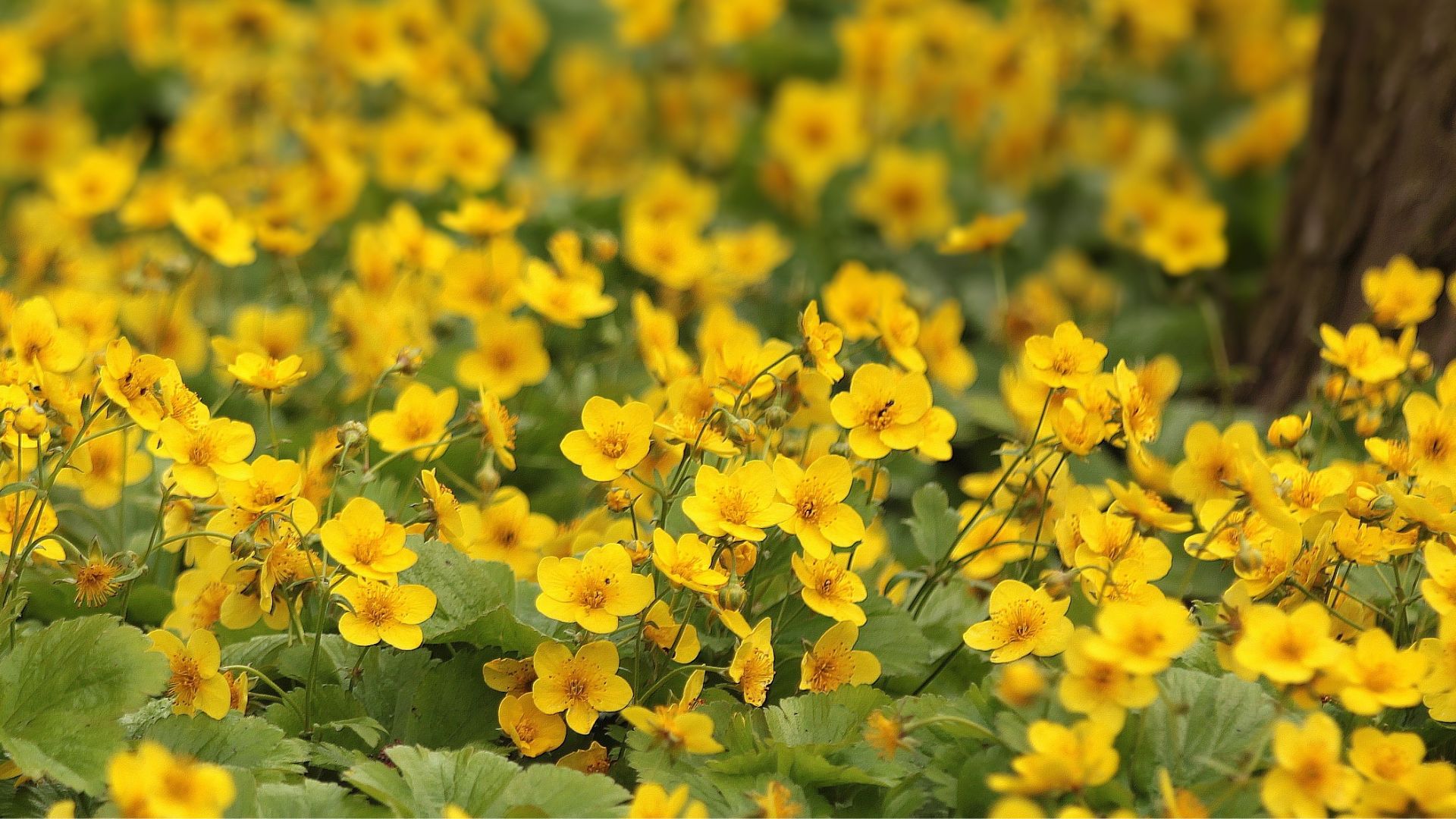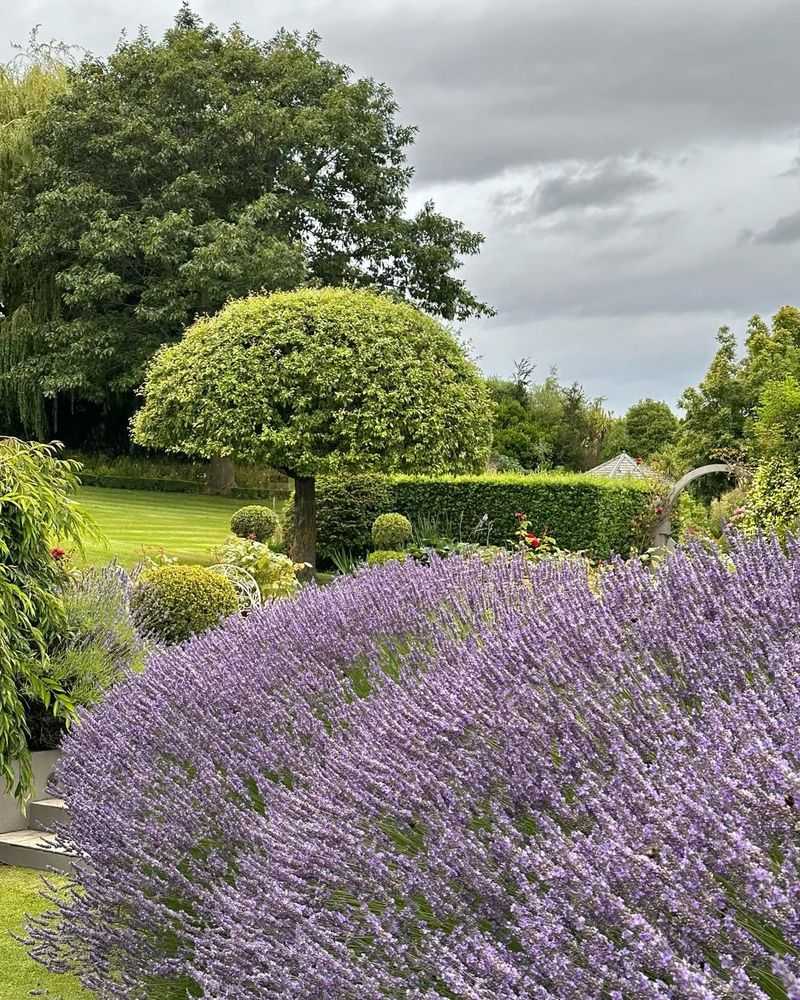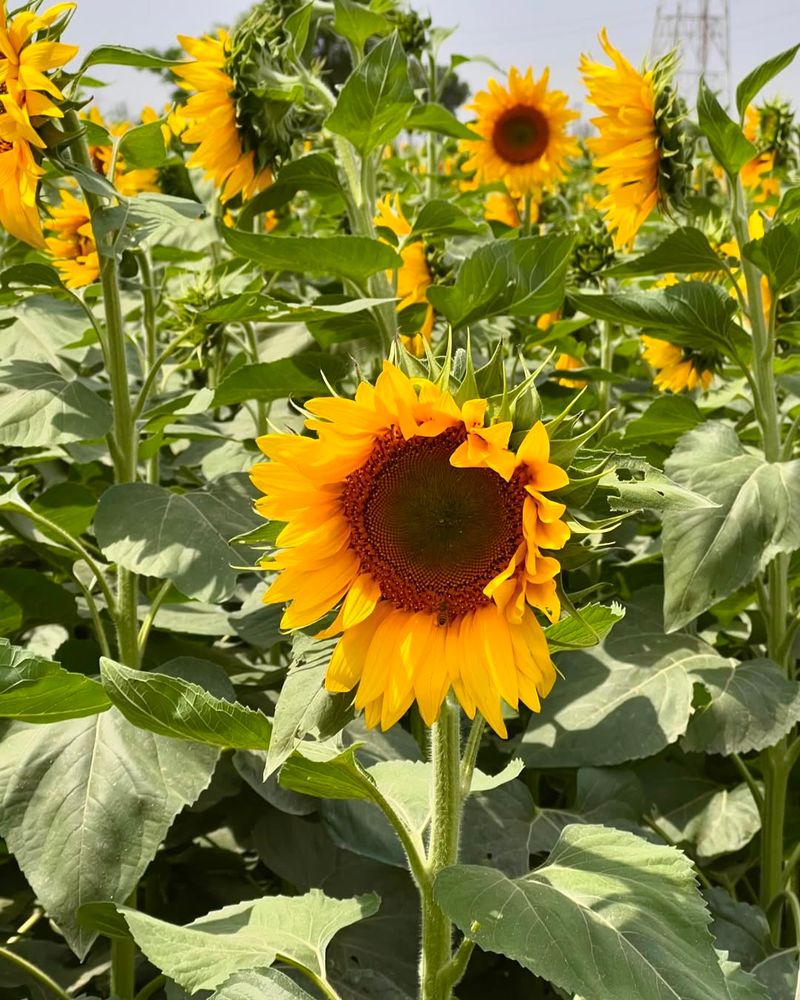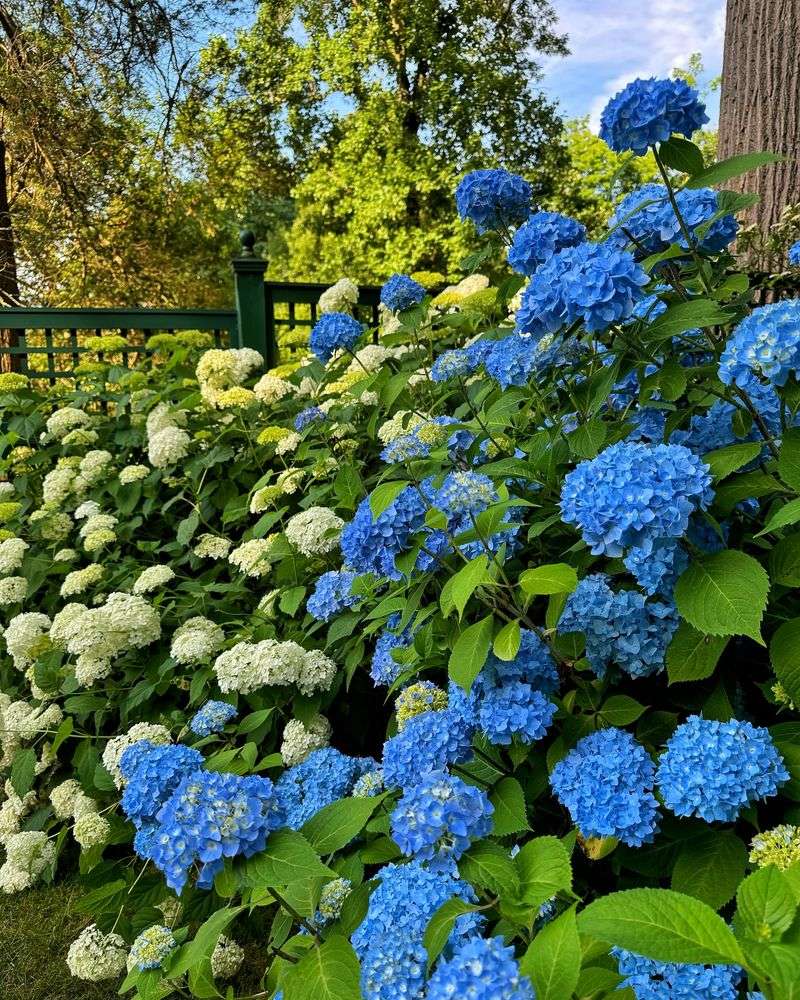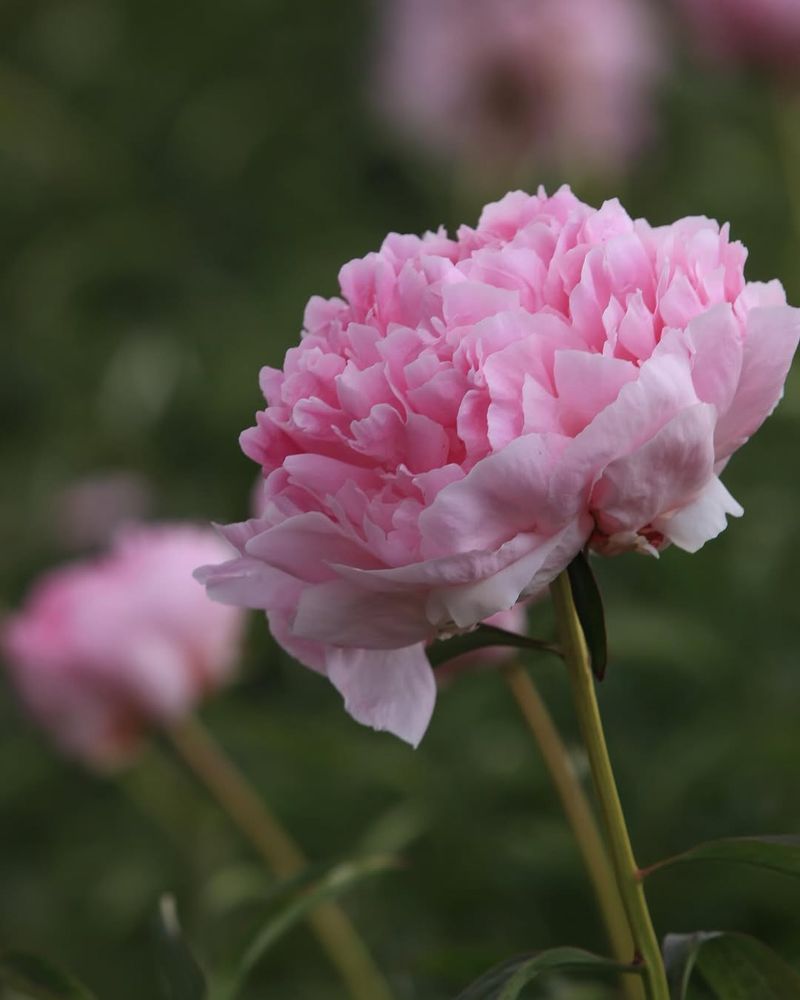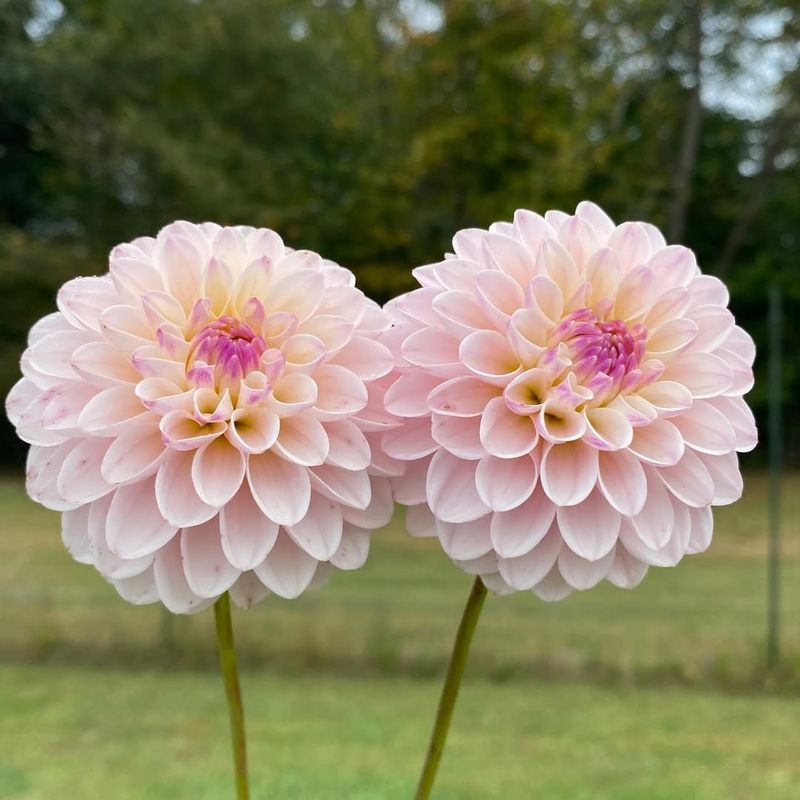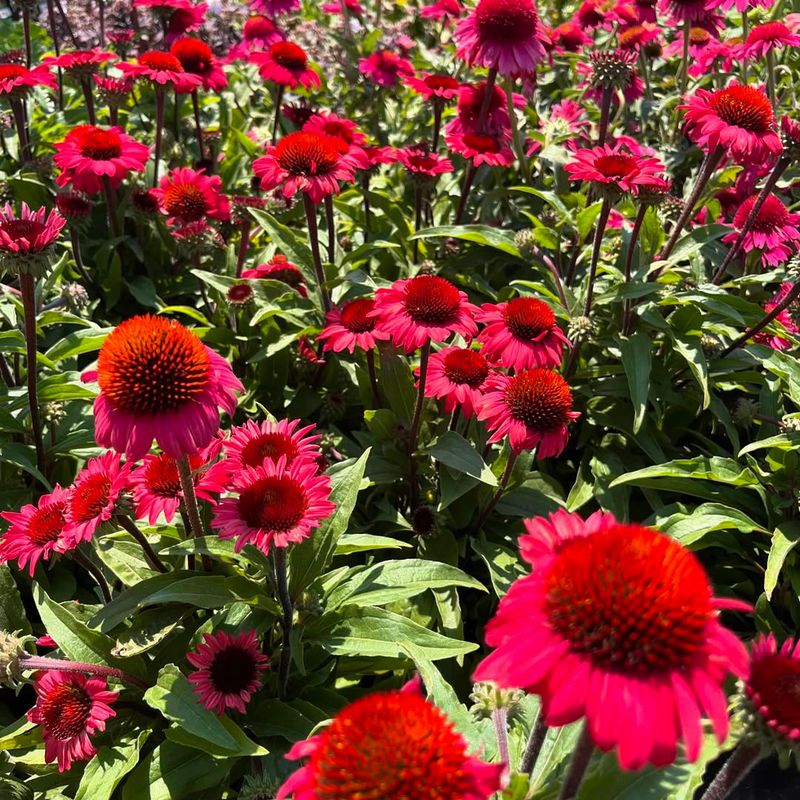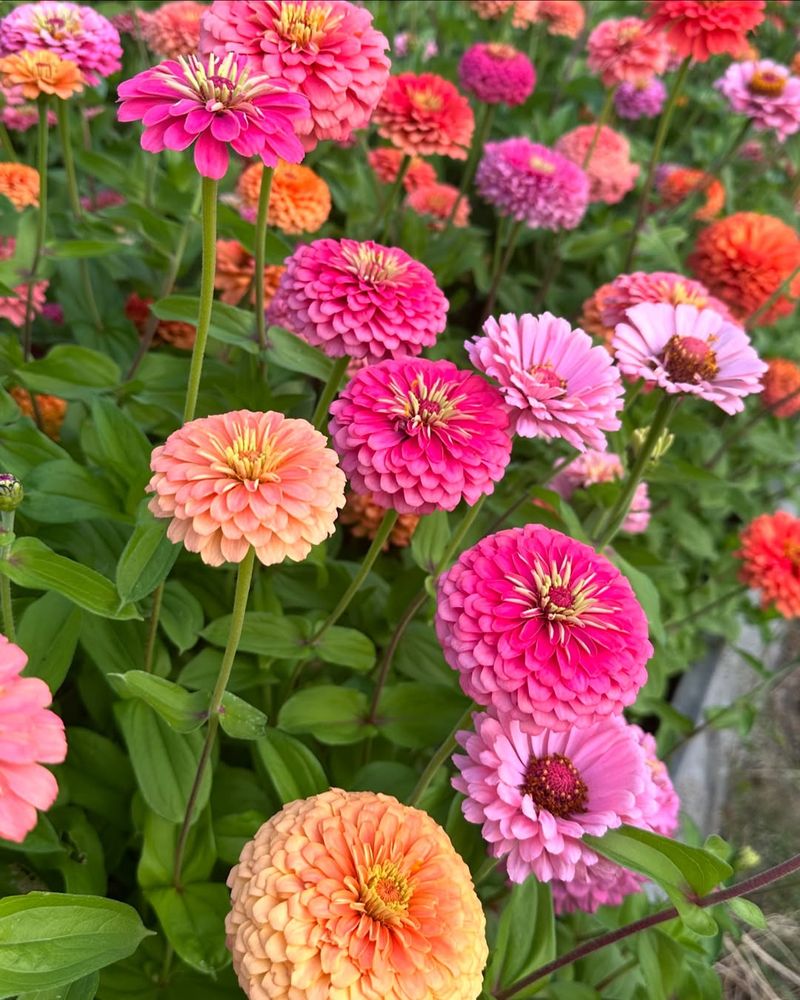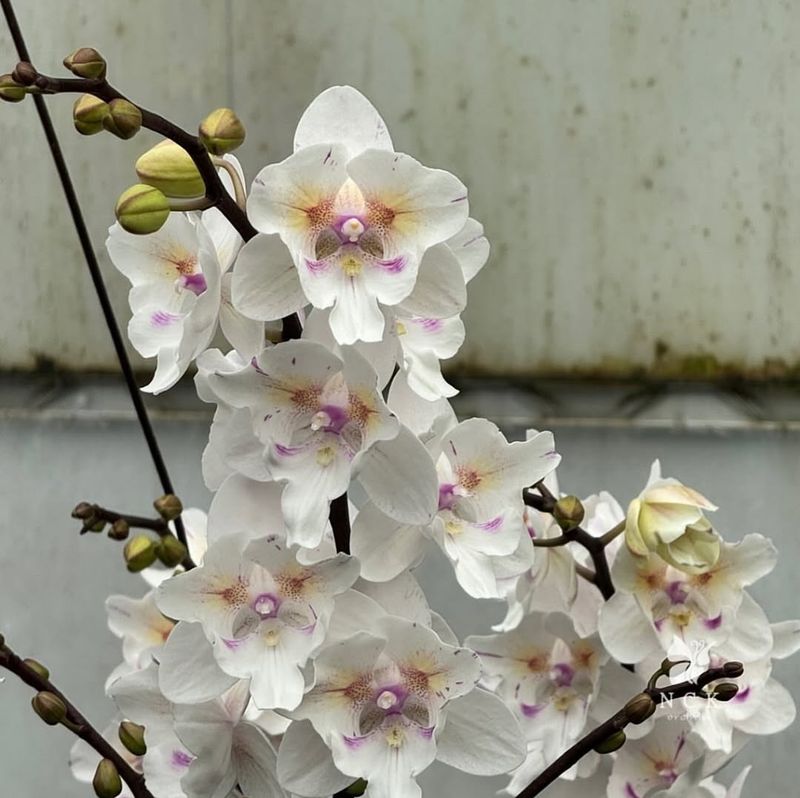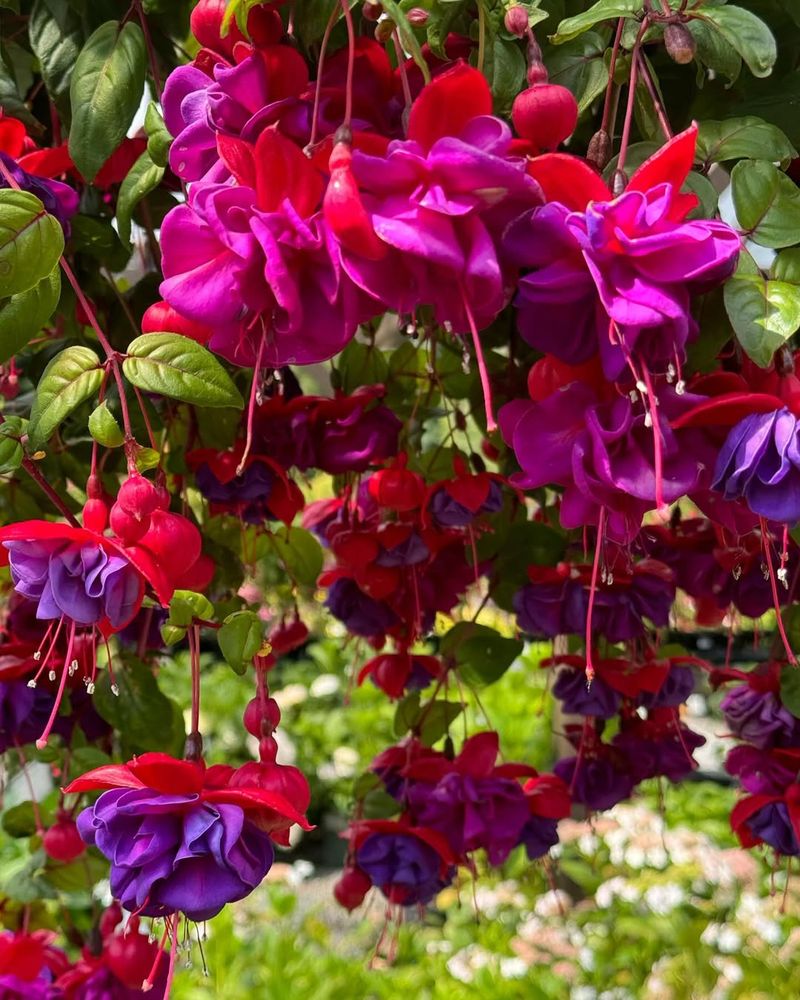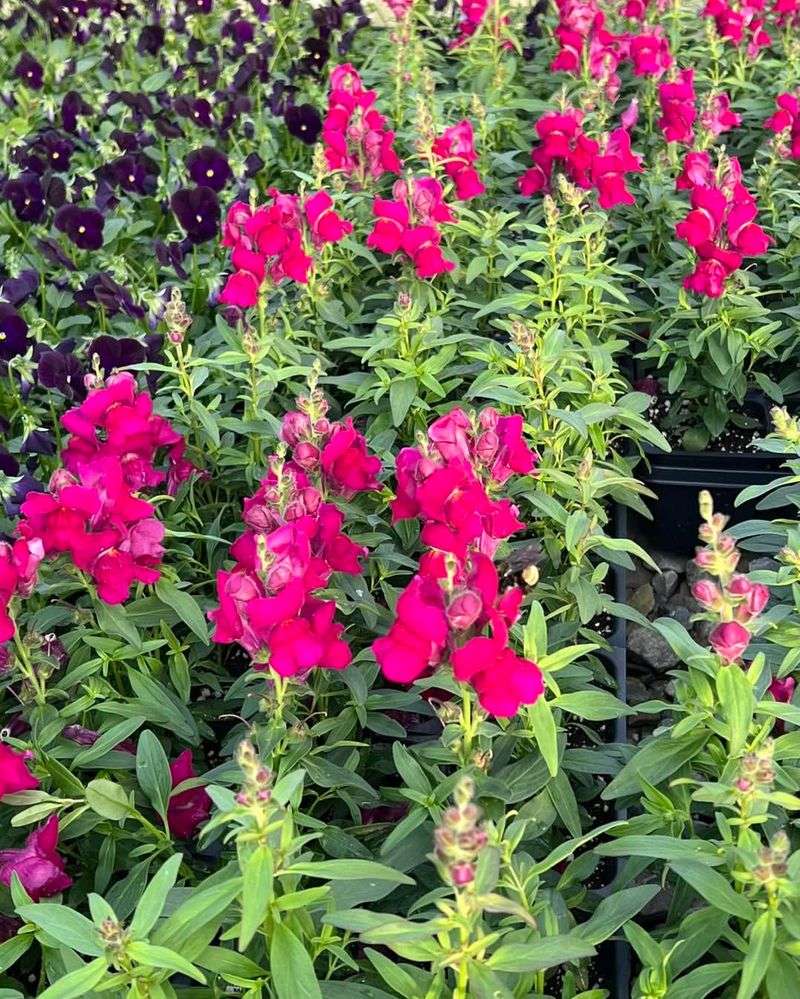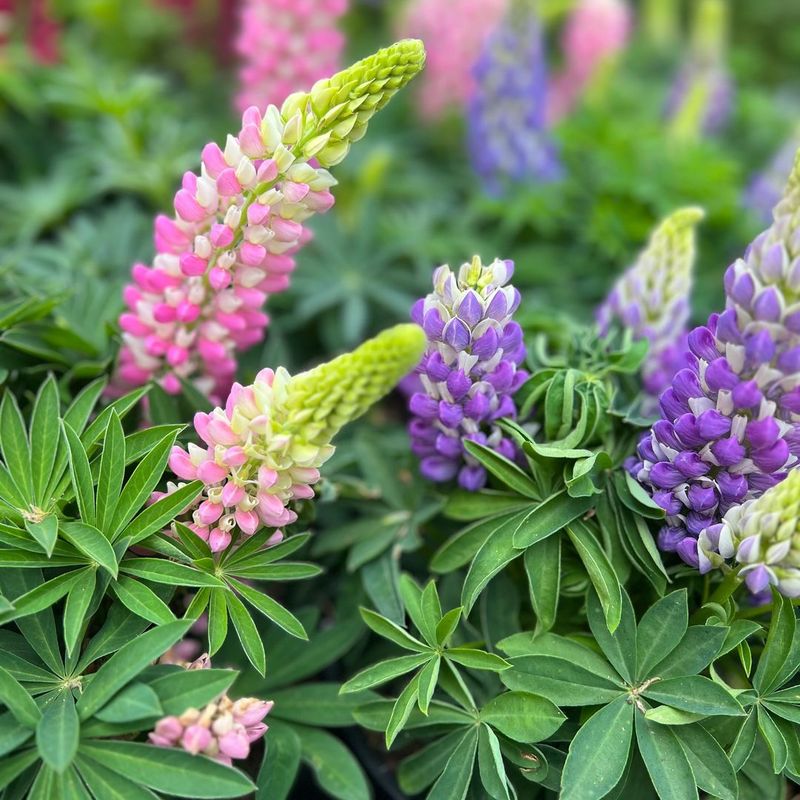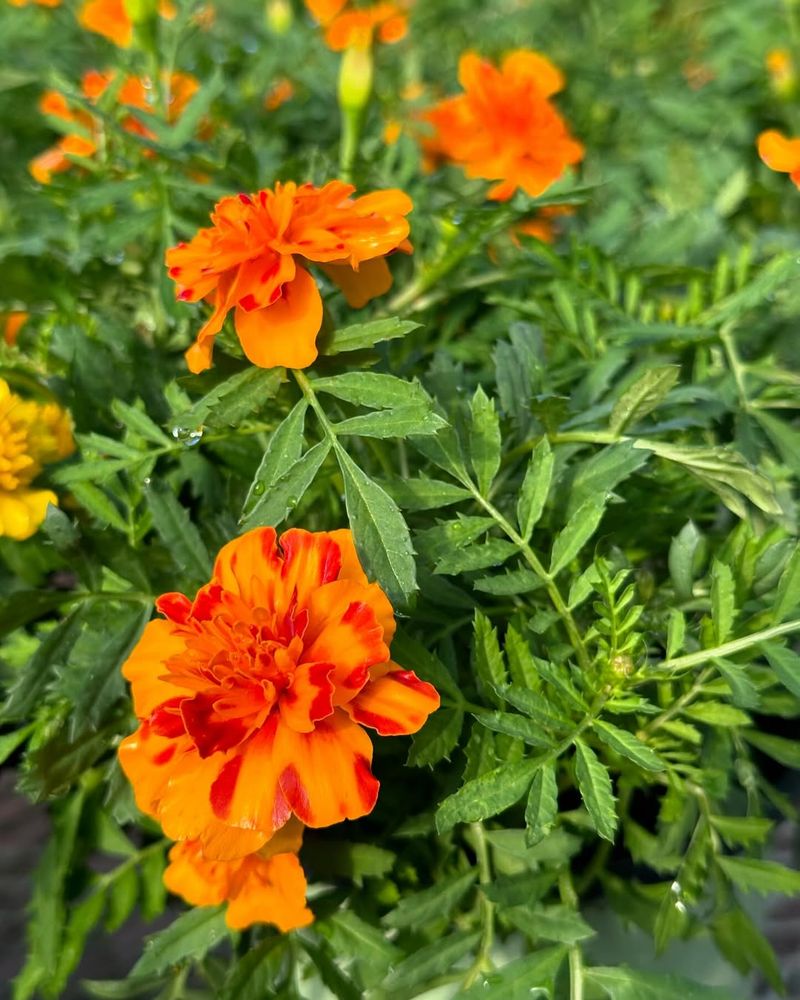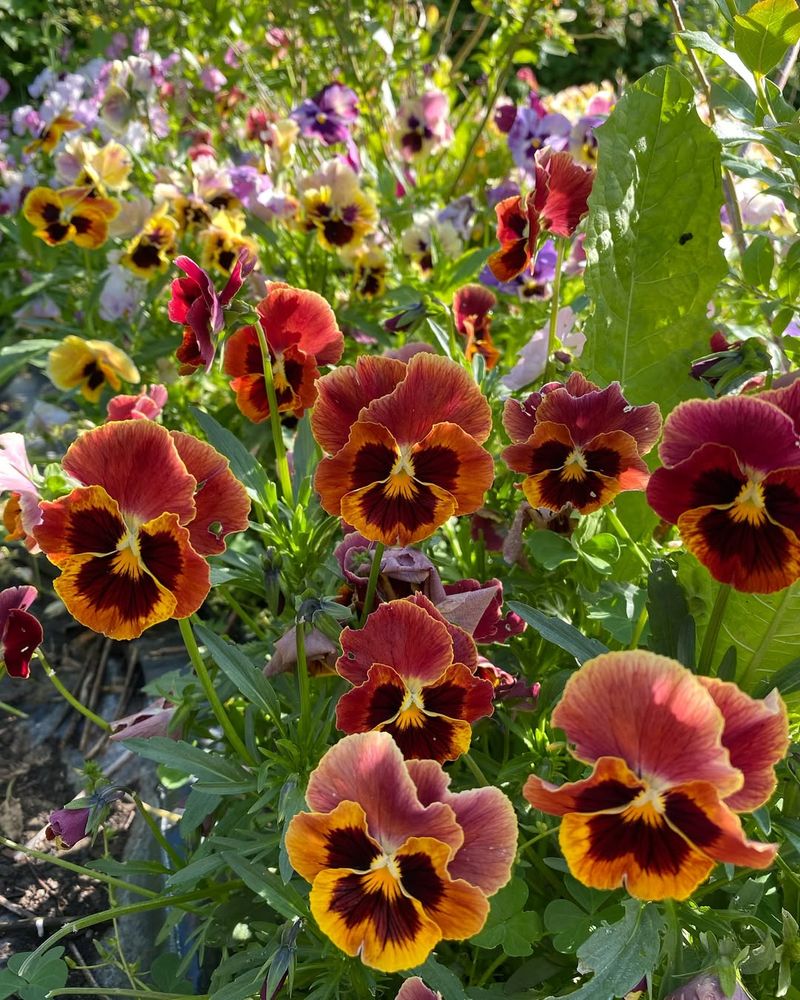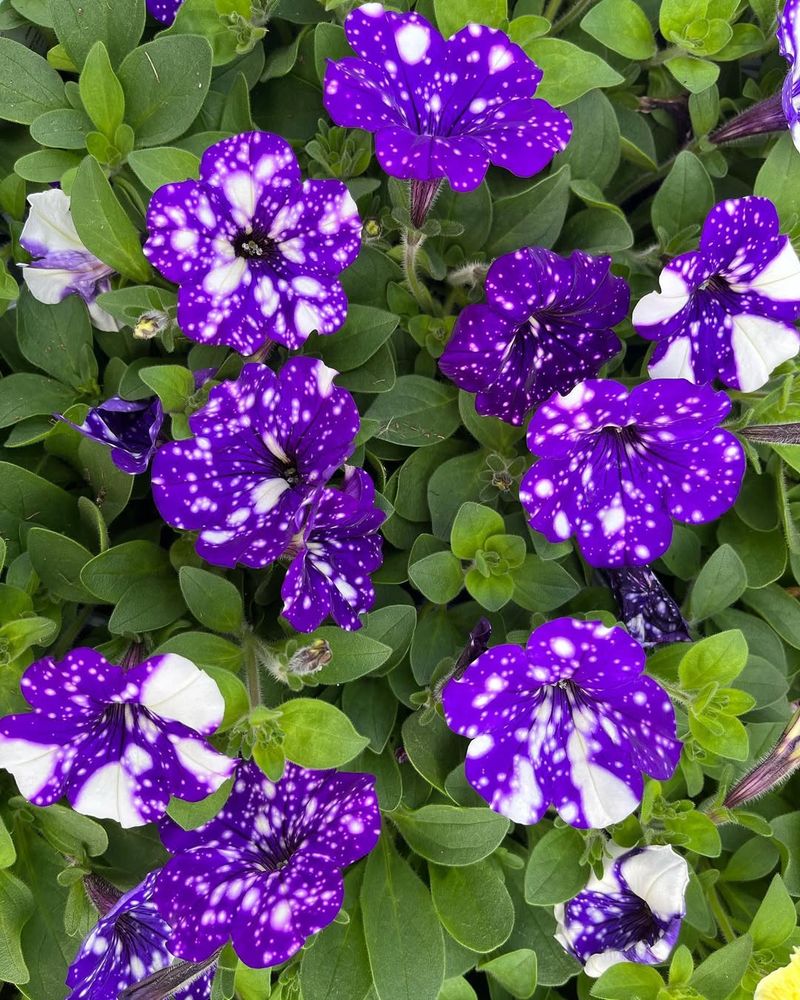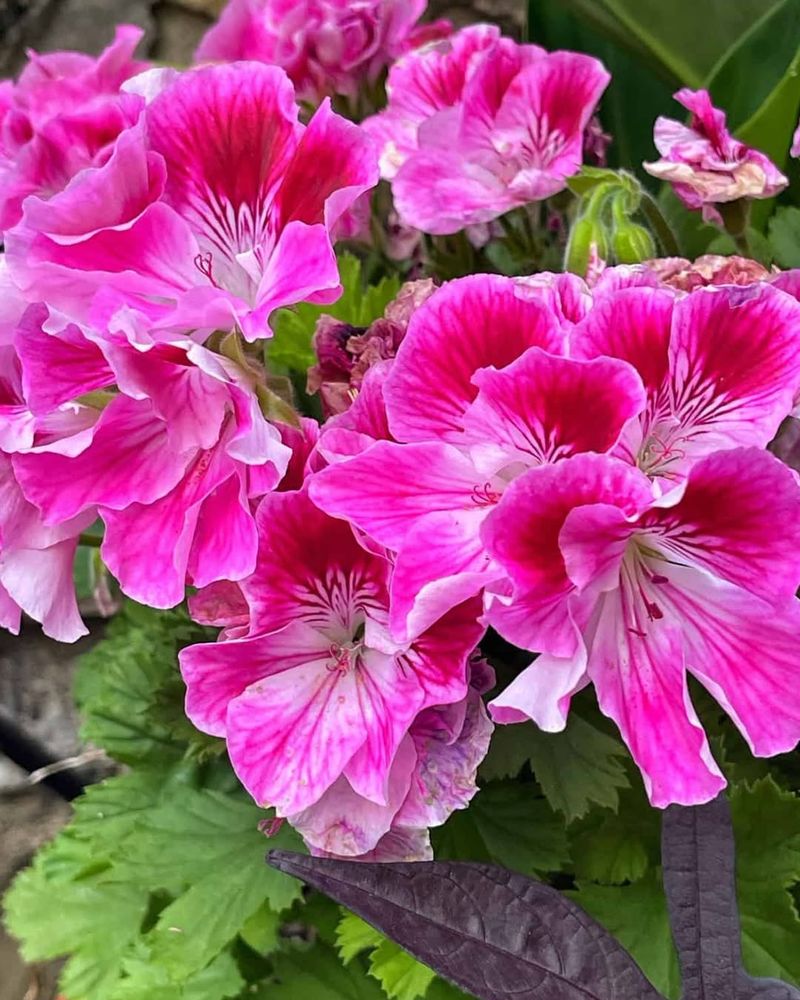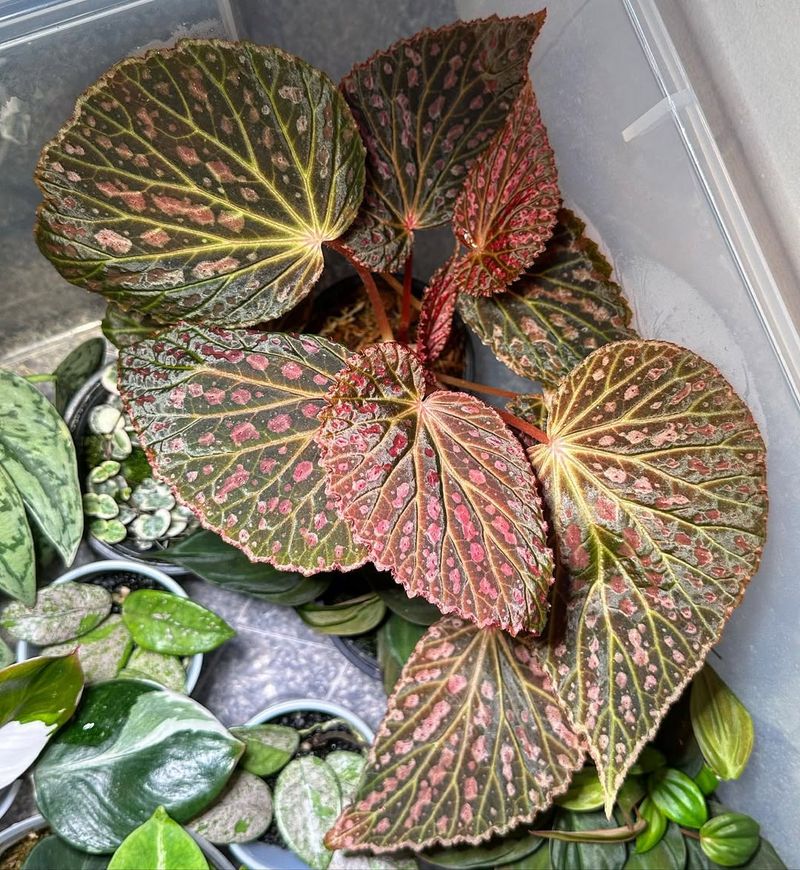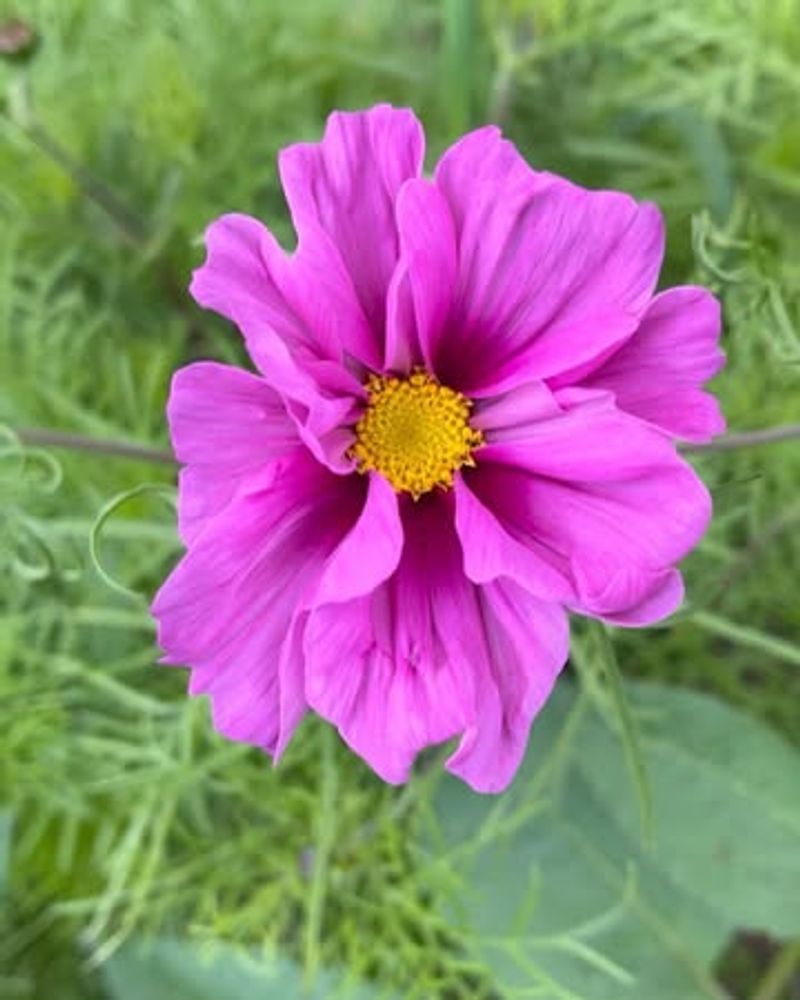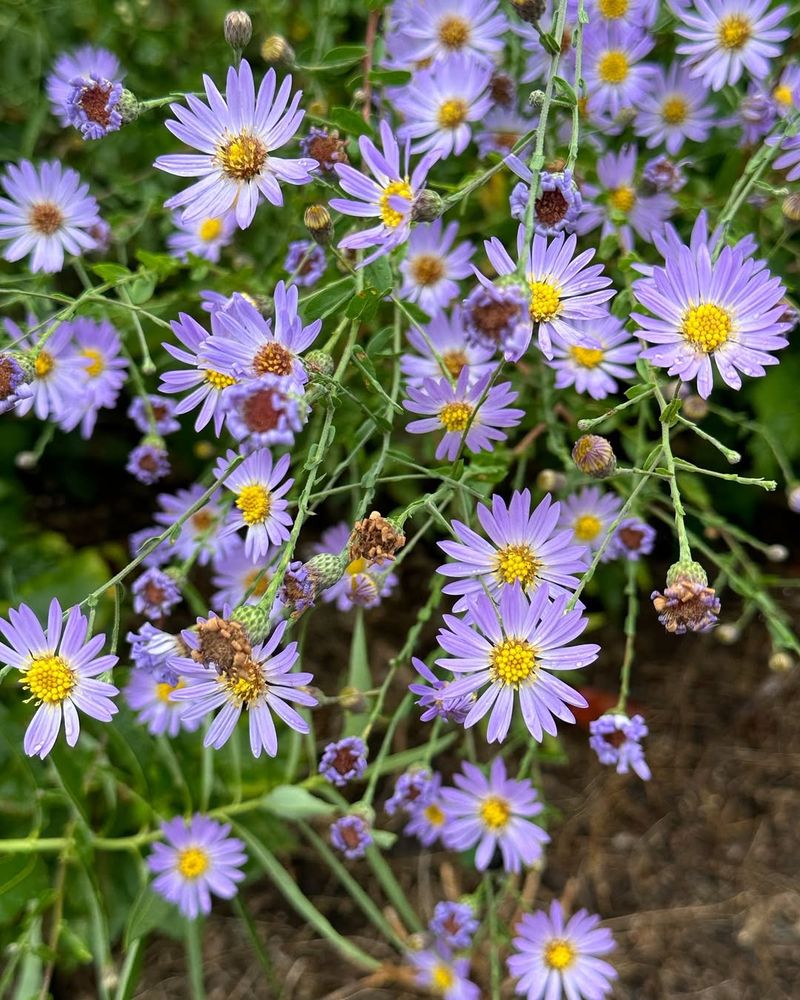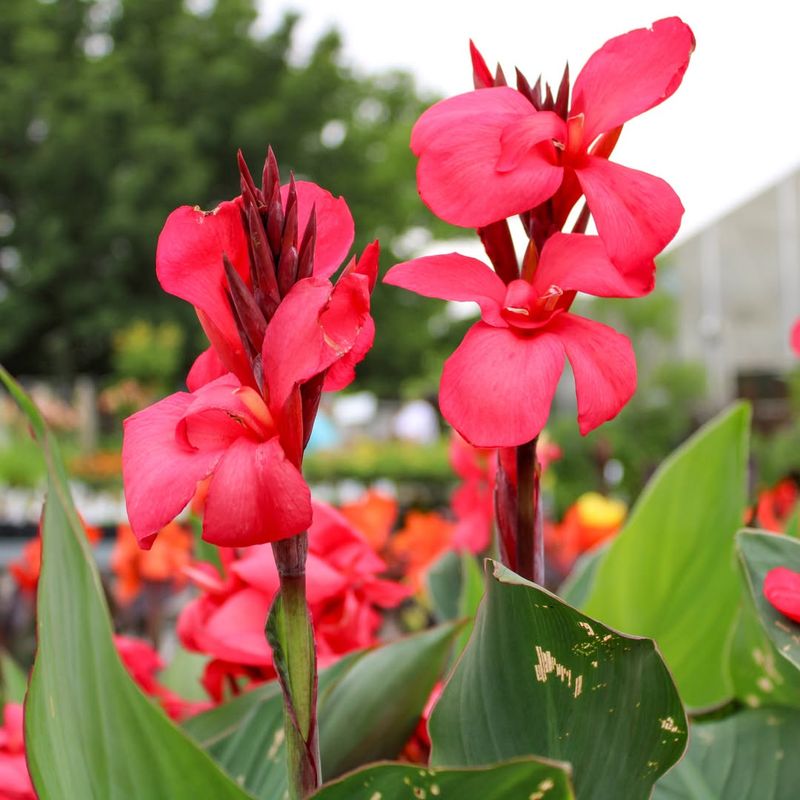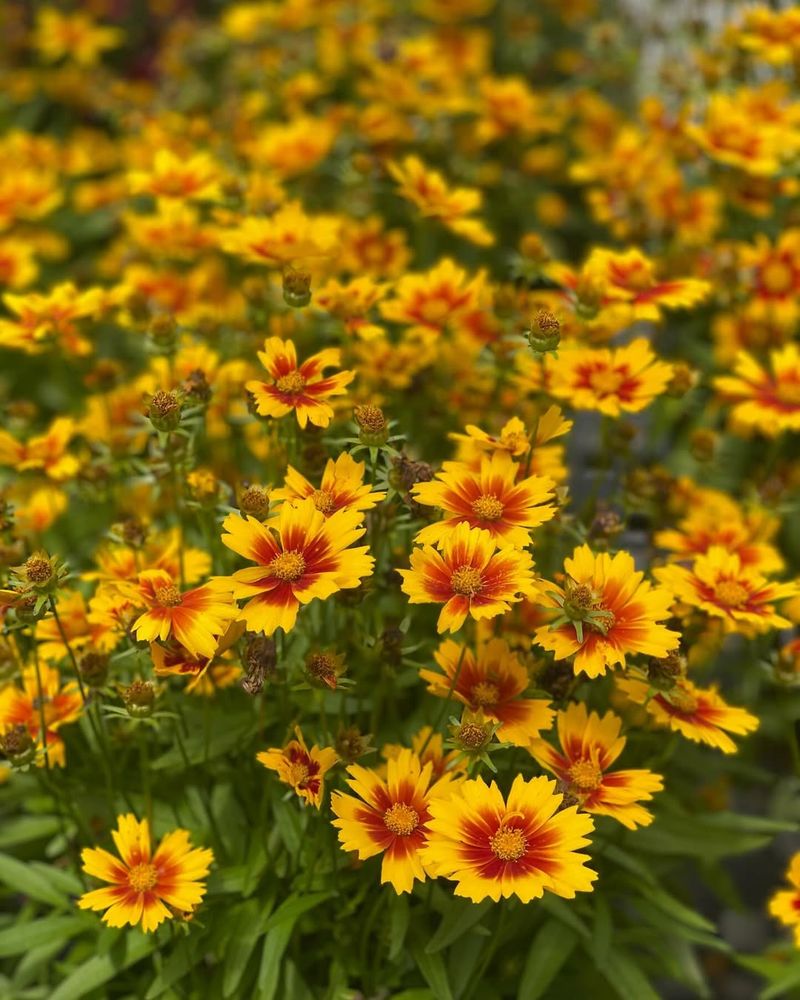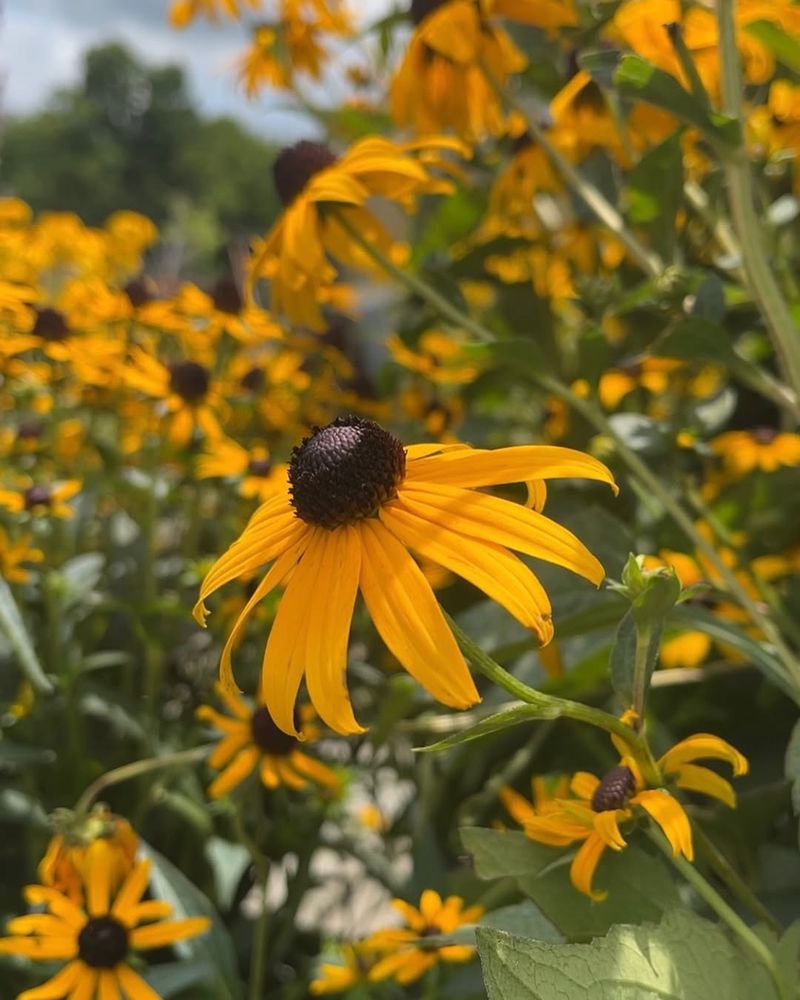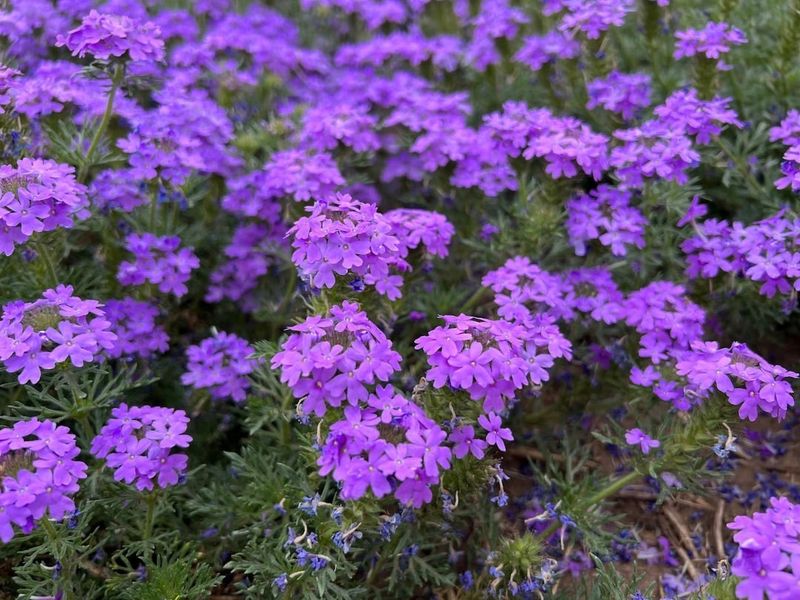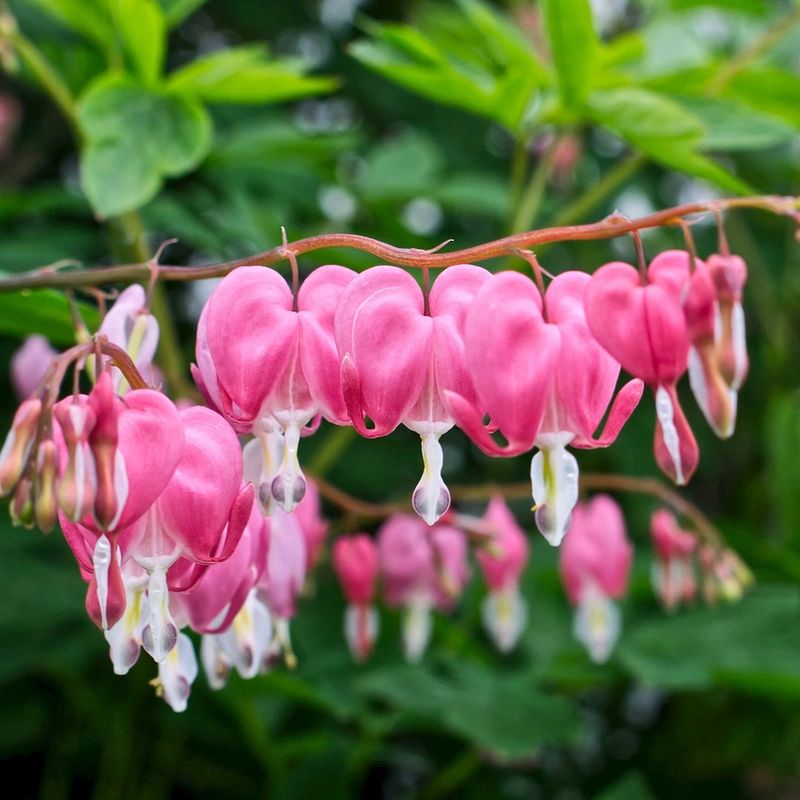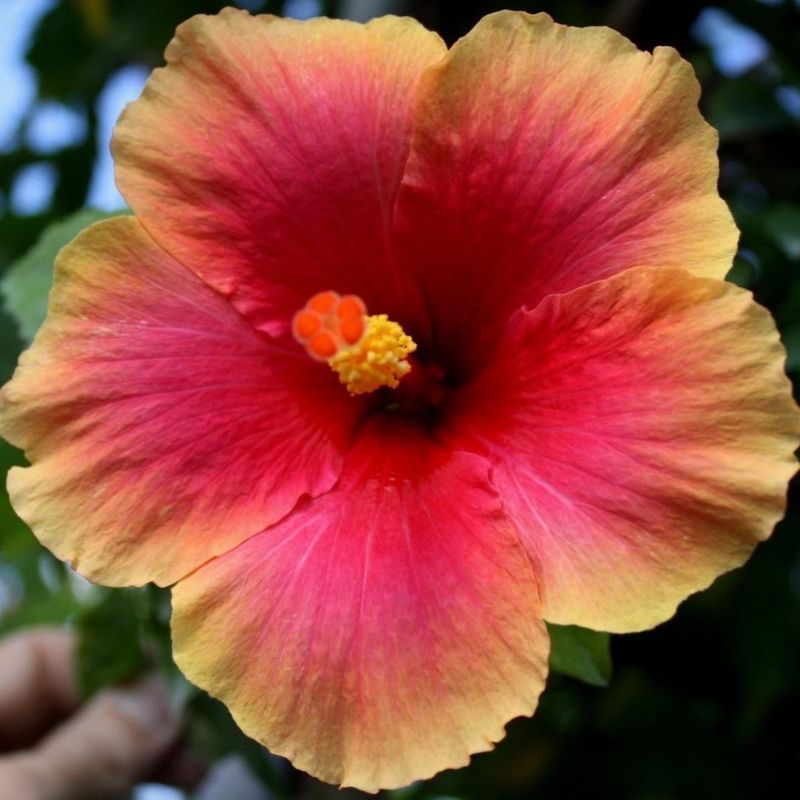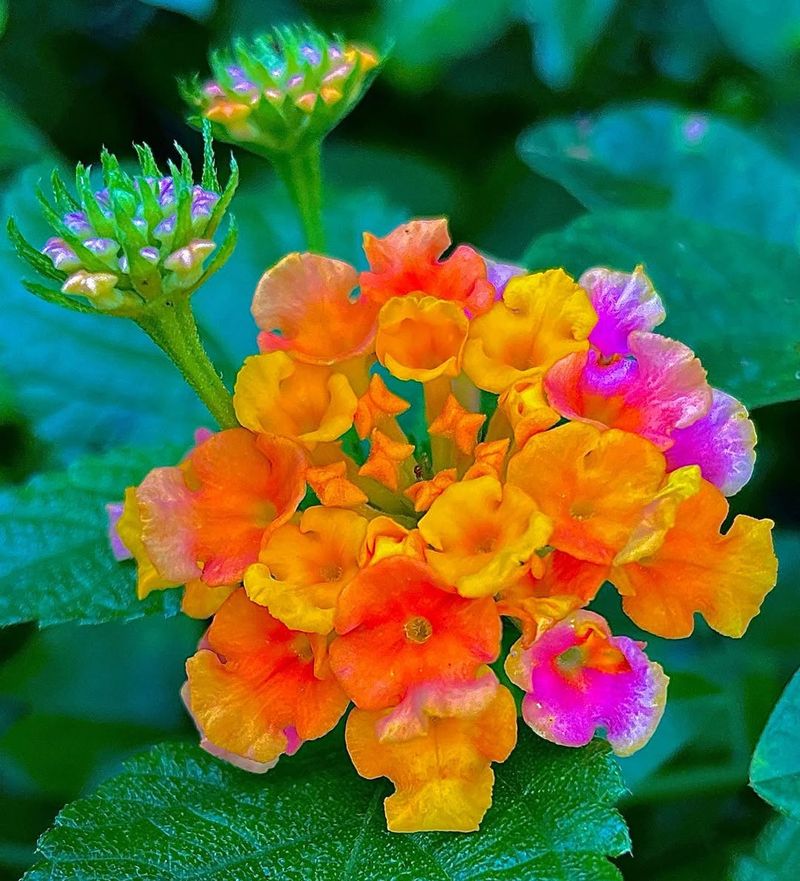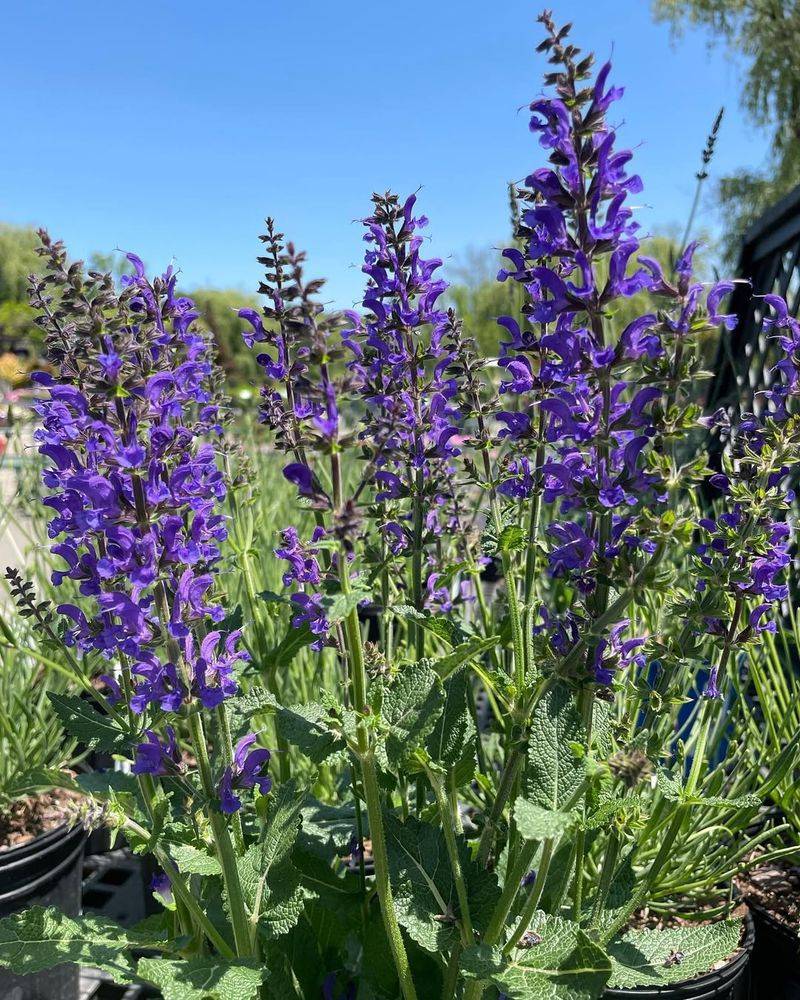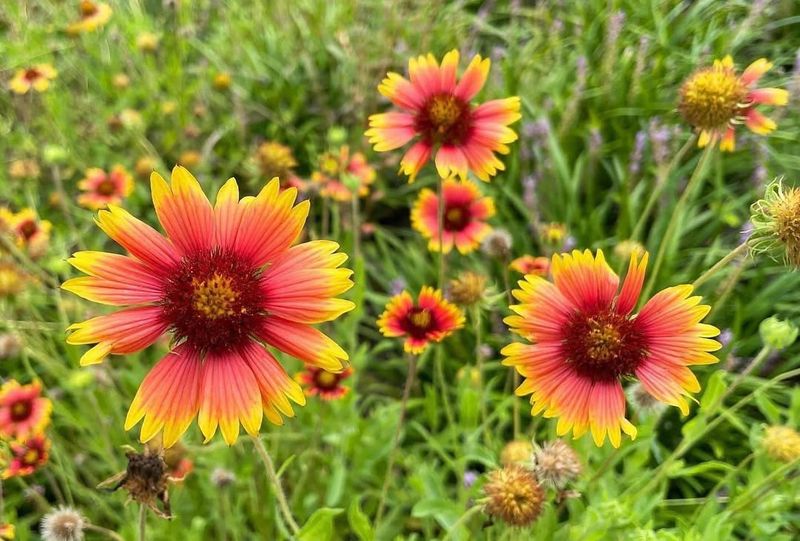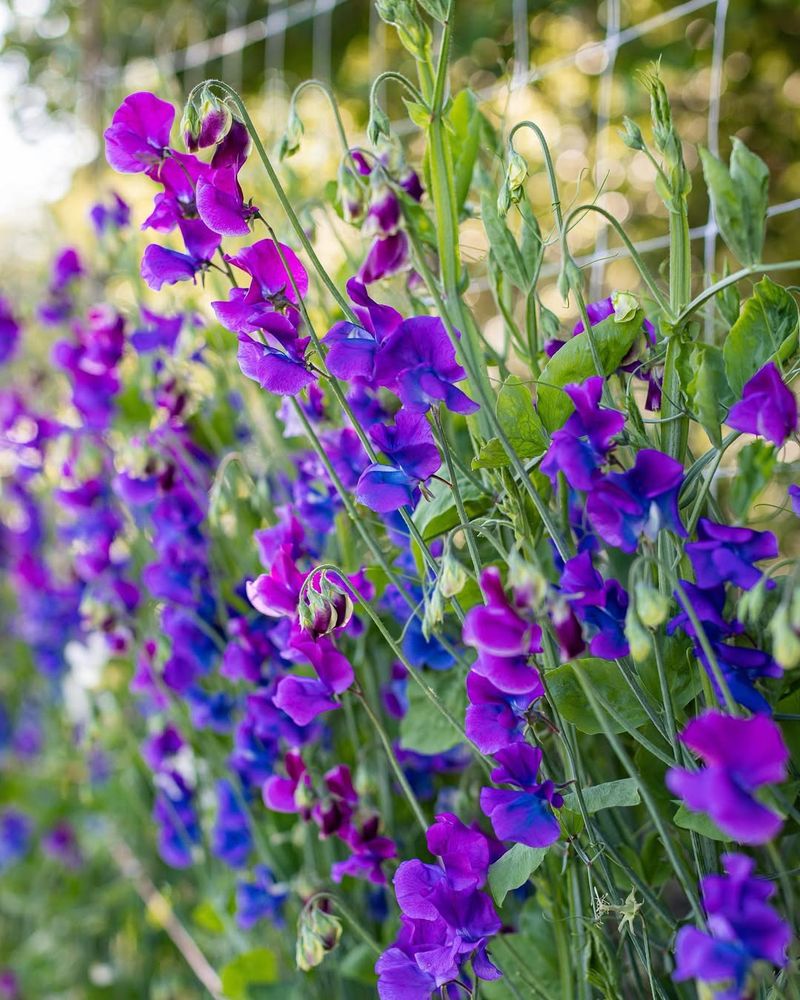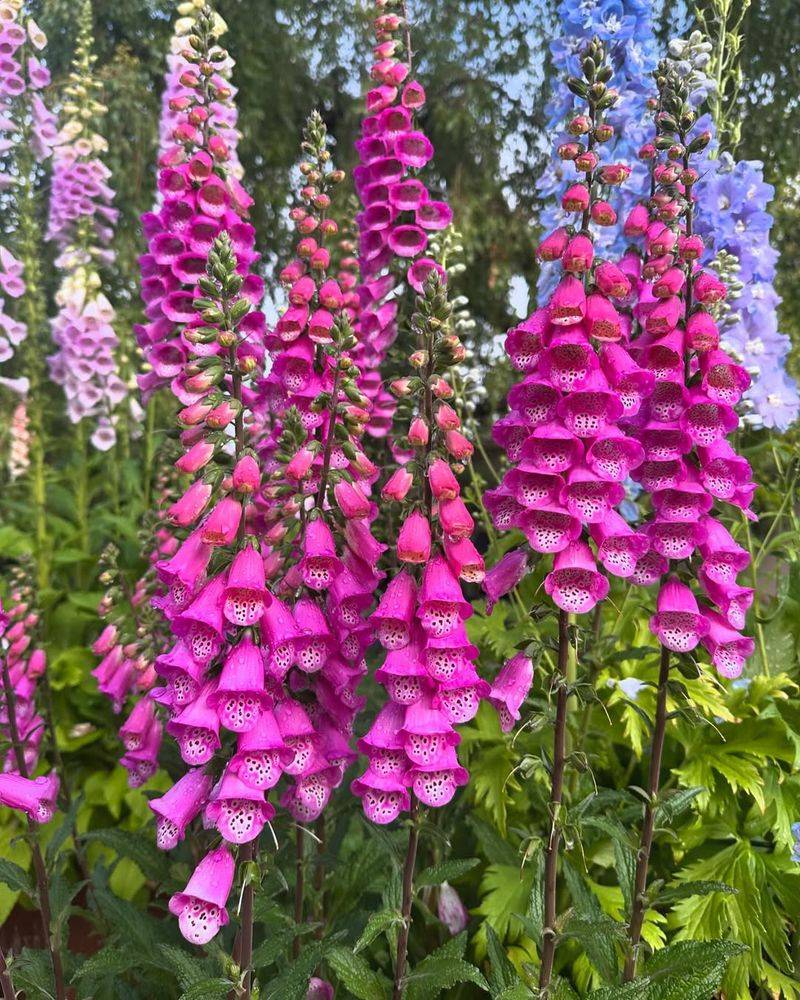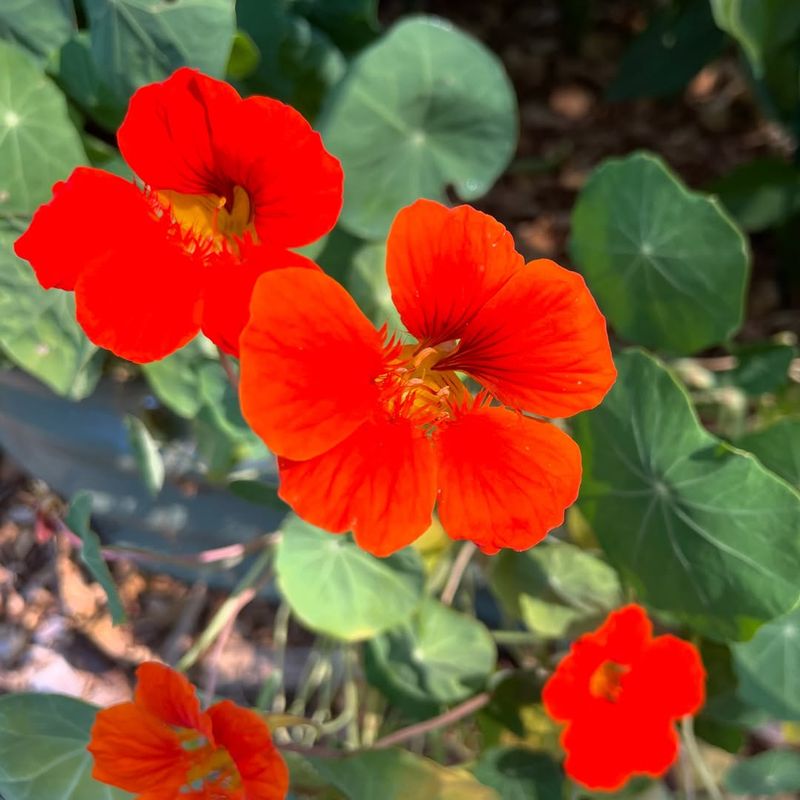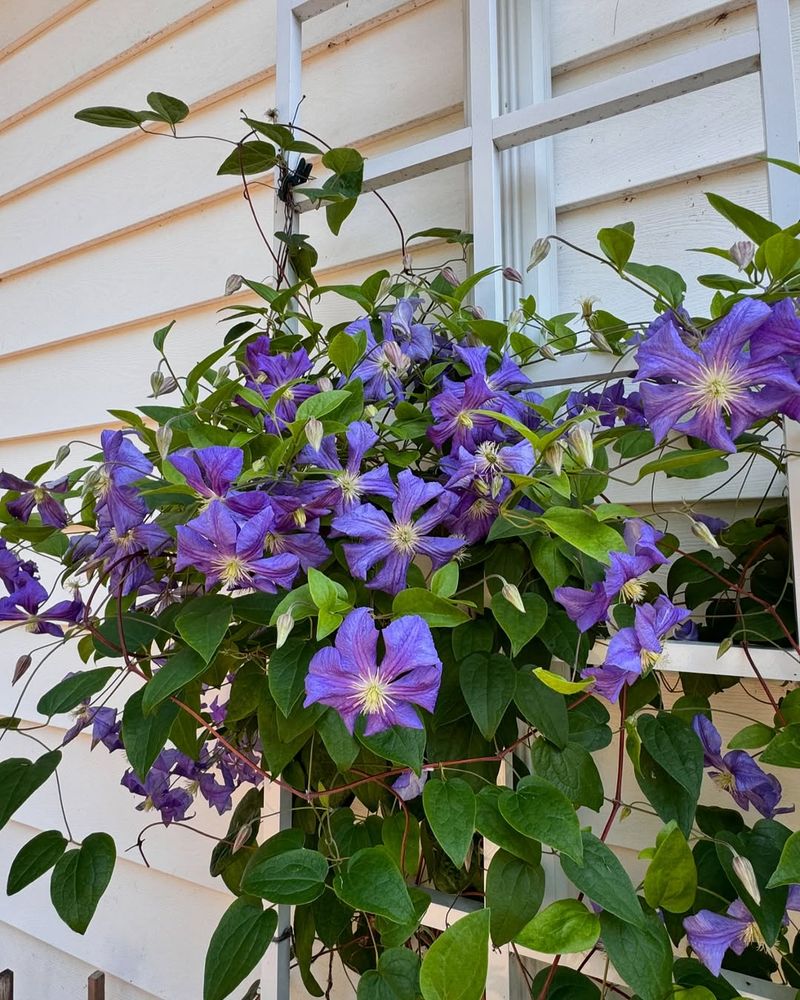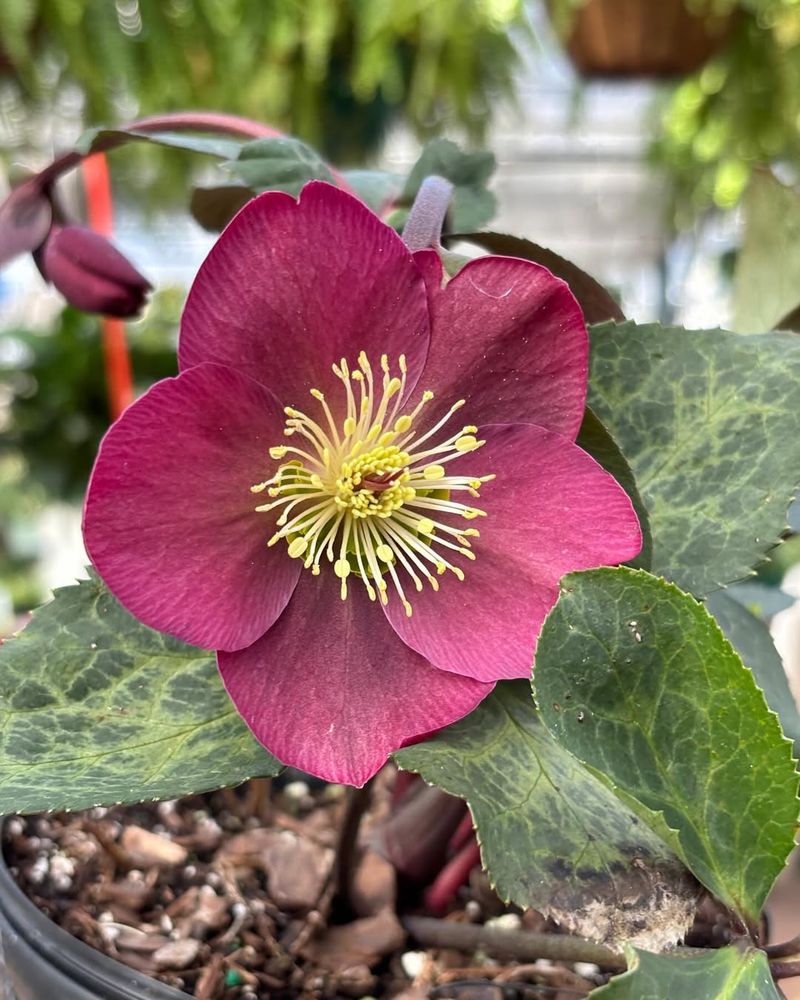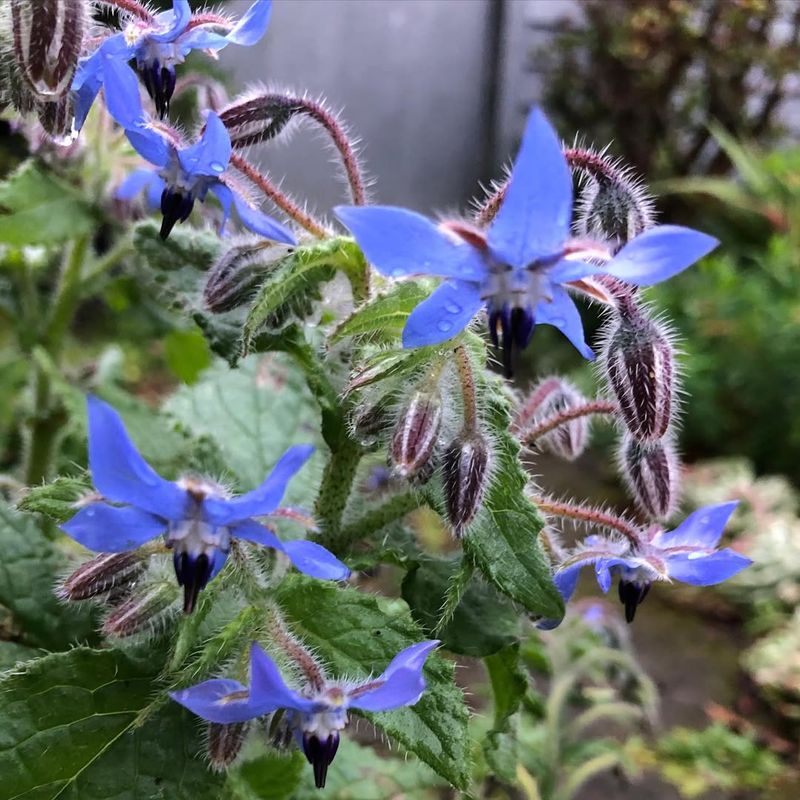Imagine strolling through a garden that’s a feast for the senses, with vibrant colors, intoxicating fragrances, and textures that invite a closer look. Buttercups may have their charm, but there’s a whole world of beautiful plants waiting to elevate your garden to a new level of splendor.
These 34 alternatives to buttercups offer not just visual delight but also unique characteristics that make them perfect for any garden enthusiast looking to diversify their plant collection.
1. Lavender
There’s something magical about a rich purple hue waving gently in the breeze. Lavender is much more than just a plant; it’s an experience for the senses. Its aromatic fragrance is both soothing and refreshing, instantly transporting you to a serene, countryside retreat.
The spiky flowers add a striking visual element to any garden, making them a favorite among gardeners. Beyond aesthetics, lavender is known for its calming properties and versatility in culinary and medicinal uses. Growing lavender is a rewarding endeavor, providing both beauty and functionality.
2. Sunflower
The sight of tall, golden blooms reaching toward the sky is a true spectacle. Sunflowers offer more than just their radiant appearance; they symbolize positivity and happiness. Their large, cheerful faces seem to turn and greet the sun, bringing warmth to any garden.
Apart from their visual appeal, sunflowers are known for their practical benefits. They attract pollinators and can be harvested for seeds that provide a healthy snack. Sunflowers are easy to grow and maintain, making them a delightful addition to any gardener’s collection.
3. Hydrangea
Clusters of blooms that change color with the soil’s pH make this plant truly fascinating. Hydrangeas are a garden staple, providing a burst of color with minimal effort. Their lush, mophead flowers create an enchanting display that captivates any passerby.
These versatile plants can thrive in various soil conditions, offering endless possibilities for garden design. Whether you prefer them in pots or as part of a border, hydrangeas add charm and elegance. Their ability to adapt makes them a reliable choice for both novice and seasoned gardeners.
4. Peony
Few plants evoke the sense of romance quite like these do. Peonies, with their lush, full blooms, are synonymous with beauty and grace. These perennial favorites are known for their intoxicating fragrance and are a staple in many traditional gardens.
The peony’s layered petals create a luxurious texture, making them a favorite for cut flower arrangements. Despite their delicate appearance, peonies are hardy and can thrive in a variety of climates. Incorporating peonies into your garden ensures a seasonal spectacle that is both timeless and elegant.
5. Dahlia
Imagine vibrant bursts of color that seem to capture the sun. The dahlia, with its diverse range of colors and forms, is a showstopper in any garden setting. Known for their dramatic petal arrangements, dahlias provide a visual feast that lasts from summer to the first frost.
These tuberous plants offer versatility and can be grown in borders or containers. Their long-lasting blooms make them ideal for cut flower arrangements, enhancing any home decor. With minimal care, dahlias bring endless joy to gardeners and flower enthusiasts alike.
6. Echinacea
Vibrant petals and unique centers make this plant a standout. Echinacea, often known as coneflower, is beloved for its bright colors and resilience. This perennial is not only beautiful but also beneficial for its medicinal properties.
Echinacea attracts pollinators like bees and butterflies, making it a great addition to eco-friendly gardens. Its ability to thrive in various climates adds to its appeal, requiring little maintenance once established. Echinacea’s combination of beauty and function makes it a valuable asset for any garden.
7. Zinnia
Picture a rainbow of colors that seem to dance in the sun. Zinnias are vibrant, cheerful flowers that brighten up any garden space. Known for their bold hues, these annuals are easy to grow and are a favorite among gardeners for their long-lasting blooms.
Their daisy-like appearance and varied colors make zinnias perfect for borders, containers, or as cut flowers. Zinnias attract pollinators, supporting local ecosystems while adding beauty. Whether you’re a beginner or an experienced gardener, zinnias are a rewarding choice, offering endless color and joy.
8. Orchid
Exotic allure meets delicate beauty in this fascinating plant. Orchids are renowned for their intricate blooms and captivating presence. Each flower tells a story with its unique shape and vivid colors, making orchids a prized possession for plant enthusiasts.
While orchids may seem intimidating, they are surprisingly adaptable and can thrive indoors with proper care. Their long-lasting flowers add elegance and intrigue to any space. Growing orchids offers a rewarding challenge, providing an opportunity to appreciate nature’s artistry up close.
9. Fuchsia
Imagine vibrant pendulous blooms that sway gracefully in the breeze. Fuchsias, with their striking pink and purple flowers, are a true delight for gardeners. These unique plants add a touch of whimsy and elegance, perfect for hanging baskets or borders.
Fuchsias are known for attracting hummingbirds, bringing dynamic life to your garden. Their ability to thrive in shaded areas makes them versatile and appealing. With regular care, fuchsias offer a beautiful and lively addition that captivates onlookers and enhances any outdoor space.
10. Snapdragon
Visual intrigue and playful shapes define this plant. Snapdragons are admired for their unique flower shapes that resemble a dragon’s mouth. These fun, colorful blooms add personality to gardens, making them a favorite among both children and adults.
Snapdragons are versatile and can be grown in beds, borders, or containers. Their wide range of colors and easy growth make them a staple for playful garden designs. With proper care, snapdragons provide a lively and cheerful presence that brightens up any garden area.
11. Lupine
Tall, majestic spires create a striking silhouette. Lupines, with their towering blooms, add height and drama to any garden. These perennials produce a stunning array of colors, from deep purples to soft pinks, offering a captivating display.
Lupines are known for their ability to improve soil quality through nitrogen fixation, benefiting surrounding plants. They attract pollinators, enhancing biodiversity in your garden. With minimal care, lupines provide a beautiful spectacle that supports both visual and ecological health.
12. Marigold
A burst of sunny hues that never fails to uplift. Marigolds are bright and cheerful flowers that bring warmth to any garden setting. Their vibrant orange and yellow blossoms are reminiscent of the sun, providing a splash of color that lasts throughout the growing season.
These hardy annuals are easy to grow and can thrive in various soil conditions. Marigolds are known for their pest-repelling properties, making them a practical choice for eco-friendly gardening. Adding marigolds to your garden ensures a lively and inviting atmosphere.
13. Pansy
Delicate colors create a charming visual. Pansies, with their whimsical faces and diverse hues, are a favorite for adding personality to gardens. These compact plants offer an array of colors, making them a versatile choice for containers or borders.
Pansies are known for their ability to bloom in cooler temperatures, providing color in early spring and late fall. Their cheerful appearance and easy growth make them a popular choice for both novice and experienced gardeners. Pansies bring a touch of joy and color to gardens year-round.
14. Petunia
Imagine a cascade of vibrant blooms that spill over edges. Petunias are known for their colorful, trumpet-shaped flowers that add exuberance to any garden. These versatile annuals are perfect for hanging baskets, borders, or ground covers, offering a splash of color wherever needed.
Their continuous blooms and low maintenance make petunias a staple for many gardeners. Petunias also attract hummingbirds and bees, supporting pollinator populations. Whether you’re looking to add color to a balcony or fill a flower bed, petunias provide a reliable and cheerful solution.
15. Geranium
Vibrant clusters bring life to any space. Geraniums, with their bold and colorful blooms, are a favorite for adding cheer to gardens and patios. These hardy plants are known for their ease of care and ability to thrive in various conditions.
Geraniums offer a long blooming season, making them perfect for containers, borders, or hanging baskets. Their ability to repel certain pests adds practical value, complementing their visual appeal. Whether you’re a seasoned gardener or just starting out, geraniums are a delightful choice for any garden.
16. Begonia
Rich foliage and colorful blooms create a striking contrast. Begonias are admired for their lush leaves and vibrant flowers, making them a standout in any garden. These versatile plants are suitable for both shaded and sunny areas, providing flexibility in garden design.
Begonias are easy to care for, offering long-lasting blooms throughout the growing season. Their unique foliage adds texture and interest, enhancing the overall garden aesthetic. Whether in containers or as a ground cover, begonias bring beauty and versatility to any outdoor space.
17. Cosmos
Delicate, airy blooms dance with the wind. Cosmos are elegant flowers that bring a sense of lightness and whimsy to gardens. Known for their daisy-like appearance, they come in a variety of colors, adding a touch of charm and grace to any garden setting.
These annuals are easy to grow, making them a favorite for novice gardeners. Cosmos attract pollinators and thrive in poor soil conditions, offering both beauty and practicality. With minimal effort, cosmos can transform any garden into a colorful and inviting space.
18. Aster
Vibrant star-shaped flowers create a captivating display. Asters are known for their striking blooms that resemble tiny stars, providing a stunning visual element in gardens. These hardy perennials bloom in late summer and fall, adding color when many other flowers have faded.
Asters are a great choice for attracting pollinators and enhancing biodiversity in your garden. Their resilience and adaptability make them suitable for various garden settings. Incorporating asters provides beauty and ecological benefits, making them a valuable addition to any garden.
19. Canna
Tropical flair adds an exotic touch. Canna lilies are admired for their bold, colorful blooms and lush foliage, bringing a sense of paradise to gardens. These striking plants add height and drama, making them a focal point in any landscape design.
Cannas thrive in full sun and require minimal maintenance, making them an excellent choice for gardeners seeking a tropical vibe. Their ability to attract pollinators adds ecological value to their visual appeal. Incorporating canna lilies into your garden ensures a vibrant and lively atmosphere.
20. Coreopsis
A burst of sunshine in floral form. Coreopsis, known for its cheerful, daisy-like flowers, adds a splash of bright color to gardens. These hardy perennials bloom abundantly, creating a lively and inviting atmosphere in any garden setting.
Coreopsis is easy to grow and drought-tolerant, making it a practical choice for low-maintenance gardening. Their ability to attract pollinators enhances biodiversity and supports local ecosystems. With minimal effort, coreopsis can brighten up garden beds and borders, offering both beauty and ecological benefits.
21. Black-Eyed Susan
Golden petals that seem to smile at the sun. Black-eyed Susans are known for their vibrant yellow flowers and distinctive dark centers, providing a cheerful presence in gardens. These hardy perennials bloom from mid-summer to fall, offering extended color in garden landscapes.
Their easy maintenance and adaptability make black-eyed Susans a favorite among gardeners. These flowers attract pollinators, supporting local biodiversity while adding visual appeal. Incorporating black-eyed Susans into your garden ensures a lively and cheerful display throughout the growing season.
22. Verbena
Clusters of blooms create a vibrant tapestry. Verbena is loved for its prolific flowering and bright colors, making it a versatile choice for gardens. These charming plants are perfect for borders, containers, or ground covers, adding a splash of color wherever needed.
Verbena attracts pollinators and is drought-resistant, offering both beauty and practicality. Their long blooming season ensures continuous color, enhancing garden aesthetics throughout the summer. Whether you’re filling containers or creating a vibrant border, verbena provides a delightful and easy-growing option.
23. Hosta
Rich foliage creates a lush backdrop. Hostas are renowned for their large, textured leaves that add depth and interest to shaded gardens. These hardy perennials are a staple for adding greenery and structure to garden landscapes.
While primarily grown for their foliage, hostas also produce elegant white or lavender flowers. Their low maintenance and adaptability make them a popular choice for gardeners seeking a lush, verdant look. Incorporating hostas provides a serene and calming garden environment, perfect for shaded areas.
24. Bleeding Heart
Delicate blooms with a romantic flair. Bleeding hearts are adored for their distinctive heart-shaped flowers that add a touch of whimsy and romance to gardens. These enchanting plants thrive in shaded areas, creating a charming display with their arching stems and dangling blooms.
Their unique appearance and easy care make bleeding hearts a favorite for shaded borders and woodland gardens. While typically pink, they can also be found in shades of white, offering variety in design. Bleeding hearts provide a captivating and low-maintenance addition to any garden space.
25. Hibiscus
Tropical beauty that commands attention. Hibiscus is known for its large, showy flowers that bring an exotic flair to gardens. These striking blooms are a favorite for creating a tropical paradise, adding color and life to any outdoor space.
Hibiscus plants thrive in warm climates and are relatively easy to care for, making them a popular choice for gardeners seeking bold blooms. Their ability to attract pollinators adds ecological value to their visual appeal. Growing hibiscus ensures a vibrant and dynamic garden atmosphere.
26. Lantana
Clusters of vibrant blooms create a lively scene. Lantana is cherished for its colorful flowers and ability to attract pollinators, making it a favorite for eco-friendly gardens. These hardy plants thrive in sunny areas, providing a continuous display of color.
Lantana’s low maintenance and drought tolerance make it ideal for both novice and experienced gardeners. Their resilience and prolific blooming add beauty and ecological value to garden landscapes. Incorporating lantana ensures a lively and colorful garden environment.
27. Salvia
Tall spikes add vertical interest. Salvia is known for its striking flower spikes and aromatic foliage, providing both beauty and sensory appeal to gardens. These hardy perennials are perfect for adding height and structure to garden designs.
Salvia attracts pollinators and is drought-tolerant, making it a practical and eco-friendly choice. Their long blooming season ensures continuous color, enhancing garden aesthetics throughout the summer. Incorporating salvia provides both visual interest and ecological benefits to any garden.
28. Gaillardia
Bold color combinations create a striking contrast. Gaillardia, also known as blanket flower, is loved for its vibrant red and yellow blooms that bring warmth and color to gardens. These hardy perennials bloom abundantly, creating a lively and inviting atmosphere.
Gaillardia is easy to grow and drought-tolerant, making it a practical choice for low-maintenance gardening. Their ability to attract pollinators enhances biodiversity and supports local ecosystems. With minimal effort, gaillardia provides a beautiful and cheerful addition to any garden space.
29. Sweet Pea
Fragrant blooms with a nostalgic charm. Sweet peas are adored for their delicate flowers and captivating scent, making them a favorite for nostalgic and romantic garden themes. These climbing plants are perfect for trellises or arches, adding vertical interest and fragrance.
Sweet peas are easy to grow and offer a variety of colors, enhancing garden aesthetics and sensory appeal. Their ability to attract pollinators supports local biodiversity, adding ecological value to their charm. Incorporating sweet peas ensures a fragrant and colorful garden experience.
30. Foxglove
Towering blooms with a touch of mystery. Foxgloves are known for their tall spires of tubular flowers, creating a dramatic and enchanting presence in gardens. These biennials add height and architectural interest, making them a favorite for cottage and woodland gardens.
Foxgloves are easy to grow and attract pollinators, enhancing both beauty and ecological health. Their adaptability and striking appearance make them a popular choice for gardeners seeking a touch of charm and mystery. Incorporating foxgloves ensures a captivating and lively garden display.
31. Nasturtium
Bright blooms with edible intrigue. Nasturtiums are admired for their vibrant flowers and unique peppery flavor, making them a favorite for edible landscapes. These easy-to-grow annuals add a splash of color to gardens, while their leaves and flowers offer culinary potential.
Nasturtiums thrive in poor soil conditions and require minimal care, making them perfect for novice gardeners. Their ability to attract pollinators enhances biodiversity and supports local ecosystems. Incorporating nasturtiums provides both visual beauty and culinary benefits to any garden.
32. Clematis
Elegant vines with captivating blooms. Clematis is renowned for its large, showy flowers and climbing habit, adding a touch of sophistication to any garden. These versatile plants are perfect for trellises, fences, or arbors, offering vertical interest and lush beauty.
Clematis is easy to care for and provides a long blooming season, ensuring continuous floral displays. Their wide variety of colors and forms makes them a favorite for creative garden designs. Incorporating clematis ensures an elegant and vibrant garden atmosphere.
33. Hellebore
Nodding blooms with winter charm. Hellebores, also known as Lenten roses, are prized for their early blooms and resilience in shaded gardens. These hardy perennials produce delicate, cup-shaped flowers that add beauty and interest to winter landscapes.
Hellebores require little maintenance and thrive in shaded areas, making them ideal for woodland gardens. Their ability to bloom in late winter or early spring provides much-needed color during the colder months. Incorporating hellebores ensures a charming and enduring garden display.
34. Borage
Star-shaped flowers with herbal appeal. Borage is loved for its unique blue blooms and edible leaves, making it a favorite for herb gardens. These hardy annuals add a splash of color and offer culinary and medicinal benefits.
Borage is easy to grow and attracts pollinators, supporting biodiversity in your garden. Their ability to thrive in poor soil conditions and self-seed makes them a practical choice for sustainable gardening. Incorporating borage provides both visual interest and functional value to any garden space.

